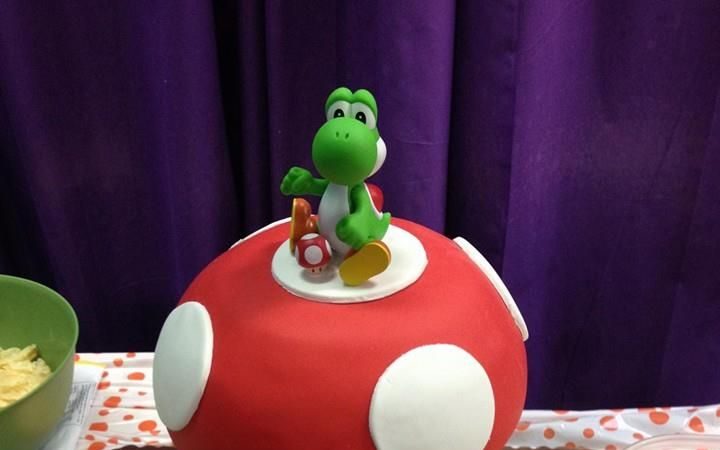Mario Cakes: How Digital Culture Rewrote Childhood Traditions

The emergence of the Mario cake as a central fixture in contemporary birthday celebrations represents nothing less than a quiet revolution in how societies transmit culture across generations, a transformation so gradual and seemingly innocent that its profound implications have largely escaped scholarly attention. Yet embedded within these fondant figurines and buttercream landscapes lies a fascinating case study of cultural adaptation, technological influence, and the remarkable capacity of children to reshape adult traditions through the simple act of expressing preference.
Table of Contents
ToggleHistorical Precedents in Celebration Culture
To understand the significance of today’s Mario cake phenomenon, one must first examine the historical trajectory of celebratory foods and their role in cultural transmission. For centuries, birthday celebrations served as vehicles for passing down regional traditions, family histories, and cultural values through carefully preserved recipes and symbolic decorations. The Victorian era established many of our contemporary cake traditions, whilst early twentieth-century immigration patterns in places like Singapore created fascinating fusion celebrations that blended multiple cultural influences into new hybrid forms.
The Mario birthday cake disrupts this historical pattern in unprecedented ways. Unlike traditional celebration foods that evolved organically within communities over generations, these gaming-themed confections represent the first widespread adoption of celebration symbols created entirely within commercial entertainment contexts. The speed of this cultural shift, from Nintendo’s initial character creation in the 1980s to global celebration ubiquity within a single generation, suggests we are witnessing something historically novel.
The Mechanics of Cultural Transmission
Singapore provides a particularly illuminating laboratory for studying this phenomenon, as the city-state’s multicultural composition allows researchers to observe how Mario-themed cake traditions intersect with diverse cultural backgrounds. Local families report that these gaming-inspired celebrations often serve as cultural bridges, providing common ground between children whose parents maintain distinct traditional practices.
“My grandmother still brings longevity noodles to every birthday party,” explains a mother of two in Singapore’s Tampines district, “but now she watches her grandchildren blow out candles shaped like power-up mushrooms on their custom Mario cake. She doesn’t understand the references, but she understands the joy. It’s become a new tradition that somehow includes everyone.”
This observation reveals how contemporary children have become active agents in cultural creation rather than passive recipients of inherited traditions. The Mario character cake serves as their chosen symbol system, one they have successfully imposed upon adult celebration frameworks through persistent advocacy and emotional investment.
The Economics of Symbolic Authority
The commercial dimensions of this cultural shift merit careful examination. Unlike traditional celebration foods that families could produce using inherited knowledge and readily available ingredients, modern gaming cake designs require specialised skills, expensive materials, and significant time investments that often exceed many families’ capabilities. This creates new forms of cultural stratification based on access to commercial services rather than traditional markers like family knowledge or community connections.
The pricing structures reveal fascinating dynamics:
- Technical complexity: Advanced decorating skills command premium rates
- Licensing implications: Character accuracy requires understanding intellectual property boundaries
- Cultural capital: Parents must learn new symbolic languages to satisfy children’s expectations
- Time economics: Multi-hour production processes that conflict with traditional home baking
- Material costs: Specialised tools and ingredients not found in typical household pantries
These economic factors transform celebration planning from community-based knowledge sharing into market-based service purchasing, fundamentally altering how cultural practices propagate across social networks.
Technological Mediation of Memory
The Mario Cake phenomenon also reflects broader shifts in how memories form and persist in digitally mediated environments. Contemporary children encounter these characters through interactive media that create more intense emotional connections than previous generations experienced with static entertainment forms. The resulting celebration requests represent attempts to bridge digital and physical experiences, transforming virtual adventures into tangible commemoration.
This technological mediation creates new forms of nostalgia that operate across different temporal scales. Adults who grew up with early Nintendo games find themselves reliving childhood memories through their children’s Super Mario Bros cake celebrations, creating intergenerational bonds around shared digital experiences rather than inherited cultural practices.
Resistance and Adaptation Patterns
Despite its apparent ubiquity, the Mario celebration cake trend encounters various forms of cultural resistance that reveal interesting patterns about tradition preservation and innovation. Some families attempt compromise solutions, incorporating gaming elements into traditional cake designs or alternating between cultural and commercial celebration themes across different years.
Educational institutions navigate similar tensions, with some schools restricting character-themed celebrations to preserve cultural diversity, whilst others embrace these new traditions as a reflection of students’ authentic interests. These institutional responses shape how children understand the relationship between personal preferences and cultural authority.
Global Patterns, Local Variations
Singapore’s position as a global city provides unique insights into how mario cake traditions develop within international networks whilst maintaining local characteristics. The humid tropical climate requires technical adaptations for fondant work, local flavour preferences influence cake compositions, and multicultural celebrations often blend gaming themes with traditional symbolic elements from various cultural backgrounds.
These adaptations suggest that even globally distributed cultural forms require localisation to achieve authentic community integration, challenging assumptions about cultural homogenisation in globalised entertainment contexts.
Conclusion: The Democratic Impulse in Cultural Change
The Mario cake phenomenon ultimately represents a fascinating example of cultural democracy in action, demonstrating how children can successfully advocate for new traditions that adults initially resist but eventually embrace. This bottom-up cultural change challenges traditional models of cultural transmission whilst revealing the remarkable adaptability of human celebration instincts. As we continue to witness rapid technological and social change, understanding how new traditions emerge and gain legitimacy through seemingly simple acts like commissioning a Mario cake becomes increasingly vital for comprehending the mechanisms through which societies adapt and evolve.





